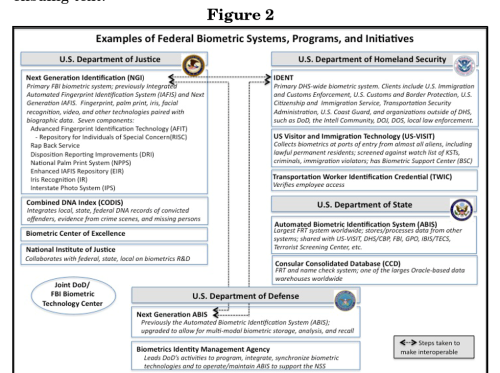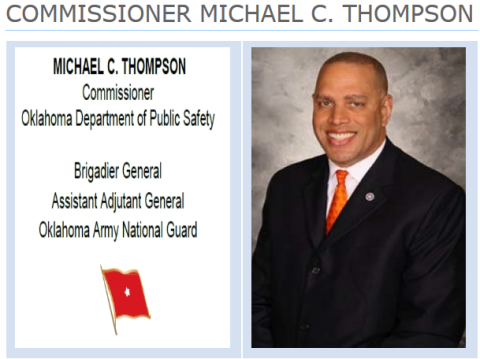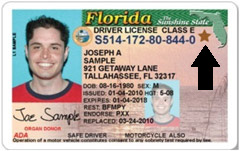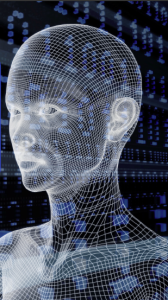
Kaye Beach
Nov. 20, 2015
On Nov. 18th there was a public study held at the Oklahoma state capitol on the issue of REAL ID. Oklahoma is under pressure to implement the federal REAL ID Act of 2005.
The meeting was held by Rep. Lewis Moore and Rep. Bob Cleveland. Many Oklahomans expected to follow the meeting online. They were disappointed. I am posting testimony of the speakers so that those who are interested can be informed on the proceedings.
Yesterday I posted Howard Houchen’s public testimony which I drew from an audio recording made of the hearing.
I was the second speaker in the lineup and spoke in opposition to REAL ID. I am not transcribing my comments but am posting my written statement that I prepared. My oral statement very closely followed my written testimony.
The next post will be on the testimony that was presented by former state representative Charles Key.
Additionally, I will transcribe the remarks of Department of Public Safety Commissioner, Michael C. Thompson as well as the discussion that transpired at the meeting.
Here is my written statement:
Testimony for Public Hearing on REAL ID
Oklahoma State Capitol
Nov. 18, 2015
Kaye Beach
Thank you Chairman and members of the committee for holding this study and for inviting me to speak today. My name is Kaye Beach. I am a member of the Board of Directors of the Constitutional Alliance, a national organization formed primarily to inform individuals and legislators about the threats to liberty posed by mandatory biometric identification.
I will keep my comments brief but I am submitting more in-depth documentation electronically for the record. This information will also be posted online at the top of my website axiomamuse.wordpress.com.
I am here today to advocate on behalf of myself and other Oklahomans who are opposed to mandatory biometric identification policies such as the one currently instituted by the Department of Public Safety and also as is required by the federal REAL ID Act of 2005.
I am personally most concerned about the mandatory collection and retention of our biometric data but I will also touch on another requirement of REAL ID that policymakers must be aware of when weighing their options.
For those that may not be aware, Oklahoma’s driver’s licenses and ID cards are biometric ID’s
{“You probably noticed that they take your index fingers but you may not have noticed, because it didn’t seem any different, that they are also collecting a high resolution digital image which is collected in a biometric format”}
The state Department of Public Safety has been collecting finger and facial biometrics since at least 2004. Oklahoma’s mandatory biometric identification policy has created a clash of conscience for some Oklahomans of faith, including myself, and has opened the door to unprecedented surveillance, which affects every one of us.
When we talk about privacy often what we are really talking about is power. The limit of our privacy is defines the limits of policy.
Believe it or not, the facial biometrics actually present a greater risk to our privacy and personal liberty that a fingerprint does.
Facial recognition is the most commonly used form of what Laura Donahue, Professor of Law at Georgetown University, has termed ‘Remote Biometric Identification” which, according to Donahue, gives the government the ability to identity multiple people, in public, at a distance, without their knowledge or consent and importantly, to do so in a continuous and on-going manner.
Professor Donahue did an exhaustive research paper in 2012 on the growing number of federal programs that are developing their ability to use remote biometric ID and legal and social perils this technology presents.

(Source: Technological Leap, Statutory Gap, and Constitutional Abyss: Remote Biometric Identification Comes of Age, Laura Donohue, Georgetown University Law Center, 2012)
Professor Donahue takes great care to emphasize that with remote biometric ID “The level of intrusiveness represents something different in kind—not degree—from what has come before.”
‘A GPS chip may reveal where the car goes, but the verification of personally identifiable information… is more invasive in its direct and personal link to a specific individual.’
Professor Donahue’s research backs up materials distributed by the FBI in 2010 that showed facial recognition technology being used by authorities to identify, investigate and track individuals in public. This sort of surveillance, while not pervasive yet, is more than just a theoretical risk. It is being done.
NLETS, the International Justice and Public Safety Network, has a vested interest in using biometric data so you wouldn’t expect them to present an extreme view as to the privacy concerns relating to its product one of its newer products which is the interstate sharing of biometric photos.
NLETS is the conduit for sharing the biometric data collected by the DMV as is required by the REAL ID ACT.
In 2011 NLETS released an eye-opening report, ‘Privacy Impact Assessment Report for the Utilization of Facial Recognition Technologies to Identify Subjects in the Field’ which “focuses on facial recognition field identification tools that use DMV images.”
According to NLETS there are many types of privacy risks surrounding the use of facial recognition technology and the report openly acknowledges that using this technology will hinder our ability to be anonymous, which, and is according to NLETS, an “important right in a free society”
NLETS also informs us of another basic truth, but it’s one I get raised eyebrows over when I say it. NLETS says that ‘As an instrument of surveillance, identification increases the government’s power to control individuals’ behavior.’
And NLETs also warns us of what is probably already obvious
‘…facial recognition systems, in combination with the wide use of video surveillance across the country, would be likely to grow increasingly invasive over time.’
We can’t know how exactly the federal government will use it but we do know that for facial recognition technology to work as a mass surveillance tool, a good database of biometric photos from previously identified people – is required. All states are collecting photos in a biometric format making our state DMV databases a potential mass surveillance goldmine.
The state has a responsibility to protect this data but the REAL ID Act requires participating states to relinquish control over this sensitive data by connecting our state DMV database to a nationwide network. What happens to our accountability mechanism? So, who do we hold accountable when our biometric data is lost, stolen or misused, if the state has signed on to REAL ID?
The Dictator Clause in REAL ID
There are actually FOUR Official Purposes defined in Sec. 201 of the REAL ID Act.
You may have heard about the first 3 official purposes which requires you to present your REAL ID when;
- Entering certain federal buildings
- Boarding a commercial airliner
- Entering a nuclear facility
The media has let us down by not asking tough questions and as a result, the threat of enforcement has been wildly overblown. In reality, the enforcement of the three official purposes will effect very few people.
REAL ID Enforcement Facts 1 page 11 12 15
It’s the fourth official purpose that is the real wild card. The fourth official purpose requires you to present a federal REAL ID for: “any other purpose established by the Secretary of Homeland Security”
This allows the Secretary of the Dept. of Homeland Security to tack on additional purposes that require a REAL ID in the future without any input from the people or congress. DHS has made it clear by that additional purposes will definitely be considered and that these additional purposes can be added solely at the DHS Secretary’s discretion.
–A mandatory biometric ID is indispensable for anything that the government wants to monitor, ration or control and once they have it – they will use it.
How can our state seriously consider Real ID compliance when doing so explicitly means agreeing to give a federal bureaucrat so much power over the state and its citizens?
Last point- It is important that we understand that biometrics do not establish a person’s identity. The common refrain is that we need biometric ID so we can know that a person is who they claim to be. But that is not how it works.
We may be many things to many people but the fact remains that it is our birth certificate which establishes our legal identity. The biometrics are added after the fact and our identity card can only be as good as the foundation upon which it rests.
Take for France’s for example. France has issued app. 6.5 million biometric passports yet an estimated 500,000 to 1 million of them are worthless because they are based on fraudulent breeder documents
EVVE, Electronic Verification of Vital Events, is service available to the states, that electronically validates (or invalidates) both birth and death records without exchanging any personal information. It is the best system available for authenticating our foundation documents.
Guess how many states are actually using this system?
Answer: Only 1 state and it’s not Oklahoma.
I am not enthusiastic about a whole lot of scrutiny on everyone’s papers but doesn’t it make more sense to scrutinize a person’s documents before you resort to scrutinizing their body?
Let me be quick to add, that there is no perfect ID, not one that a free society could tolerate anyways. It is technically possible to implement a literal womb to tomb biometric ID but it would have to be affixed to the actual body rather than on a flimsy document that could be lost or stolen. That would be pretty airtight but also horrible. Although it is true that some people do bad things with their privacy it is also true that sometimes the ability to shed your legal identity is a matter of life and death.
Requiring biometric ID for ordinary, law abiding people is unnecessary, too risky and just plain wrong. It should stop.
If REAL ID is fully implemented in this state, we will be subject to more government intrusion and control over their daily lives.
If we implement REAL ID, the state government must cede some jurisdiction and thus its power. The state will be less able to act in its citizens’ behalf and the citizens lose the ability to hold their government accountable — Why would we sign up for this? What is the benefit?
The decision of our state legislators made reject REAL ID in 2007 was a sound one. We should stick with it.














